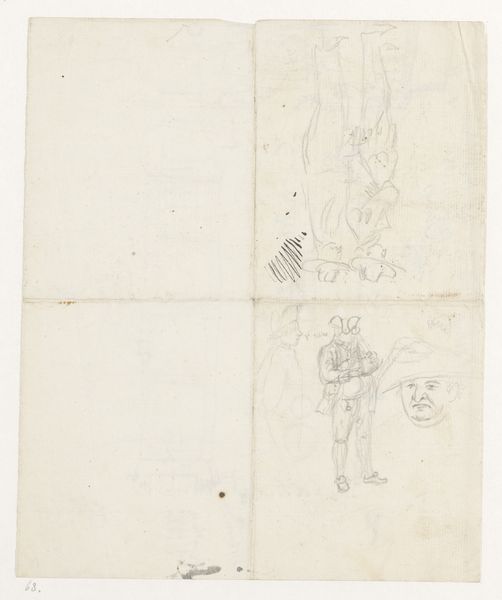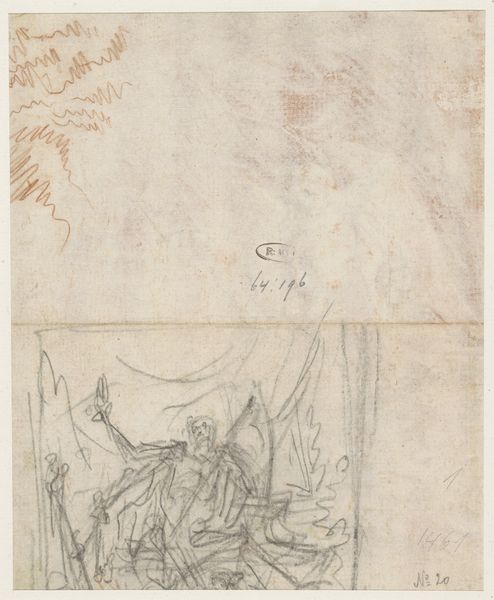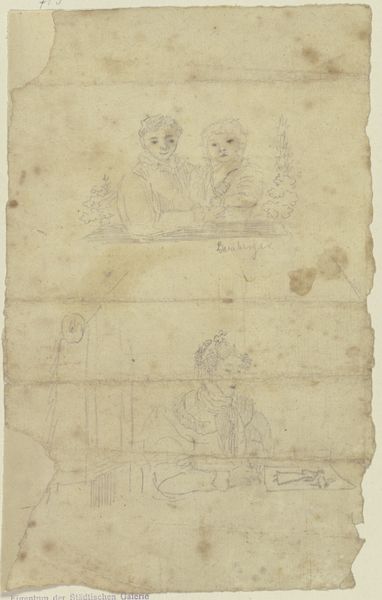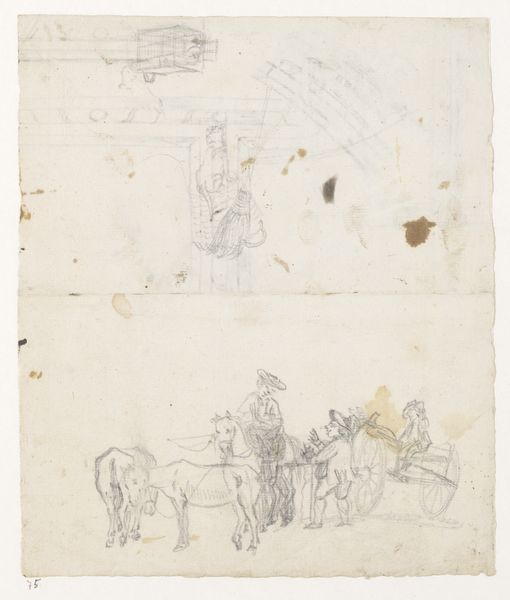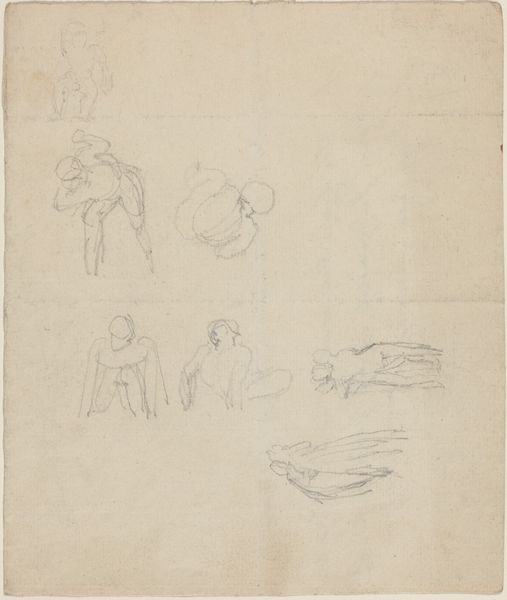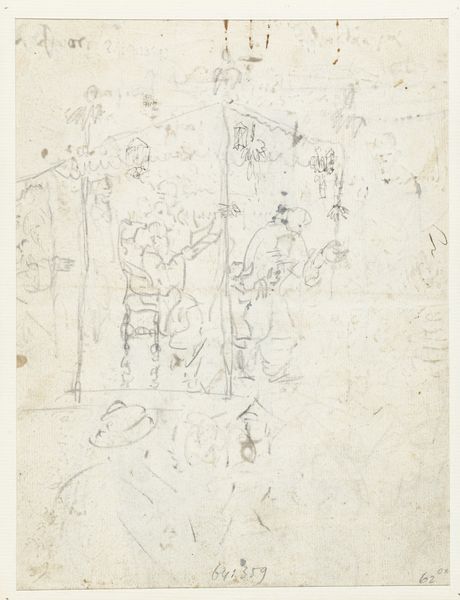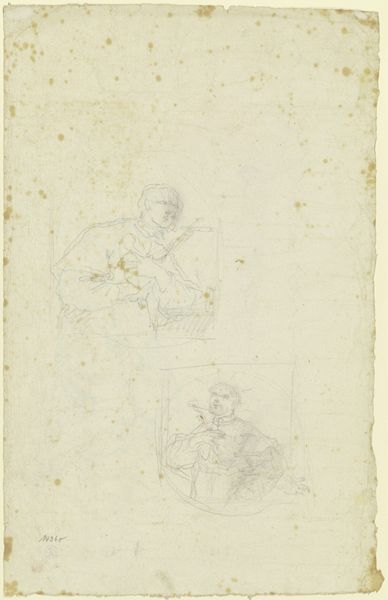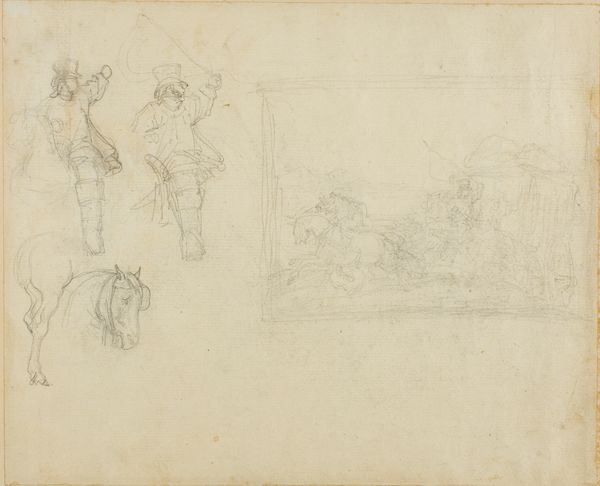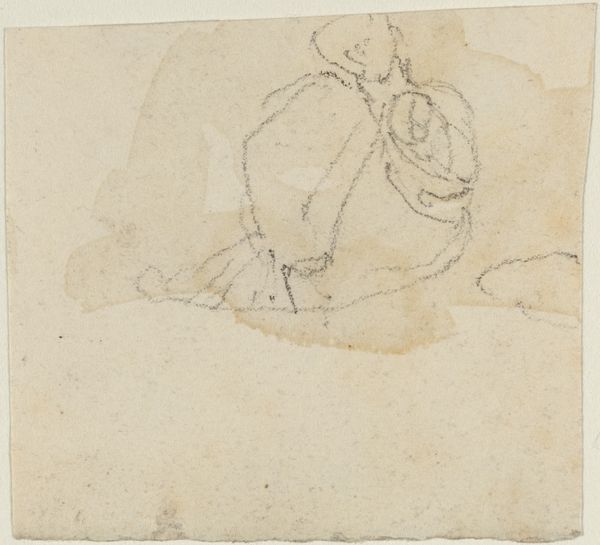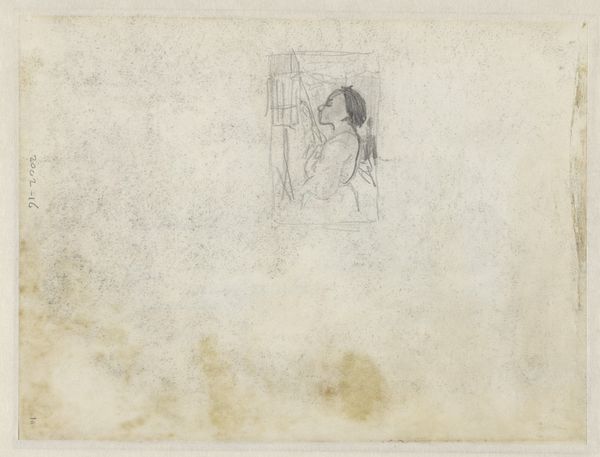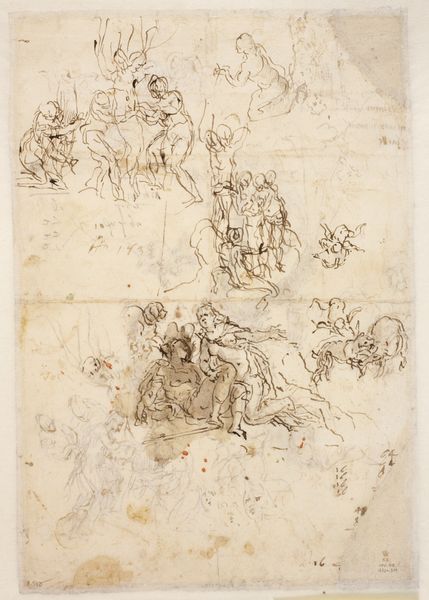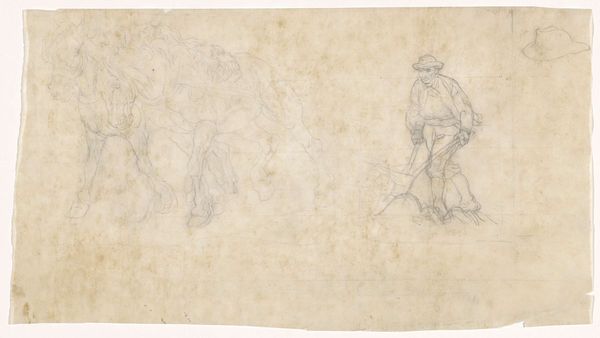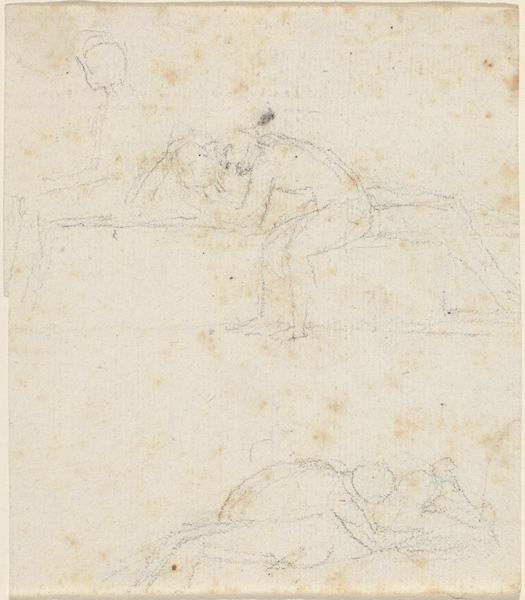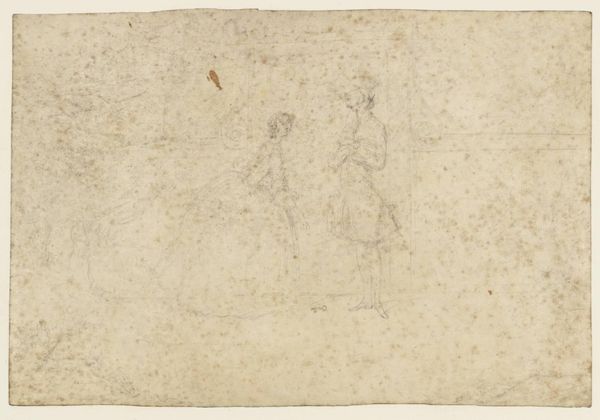
drawing, paper, dry-media, pencil, chalk
#
drawing
#
narrative-art
#
landscape
#
figuration
#
paper
#
dry-media
#
coloured pencil
#
romanticism
#
pencil
#
chalk
#
history-painting
Copyright: Public Domain
Curator: This drawing, "Gretchen in the dungeon" by Philipp Winterwerb, depicts a scene heavy with emotion using chalk, pencil, and colored pencil on paper. It is housed here at the Städel Museum. Editor: My immediate reaction is one of somber stillness. The figures are lightly rendered, almost spectral, evoking a powerful sense of confinement and despair. Curator: The choice of media and support contribute significantly to that feeling. Paper, particularly with visible age spots as we see here, conveys a sense of ephemerality. Chalk and pencil offer a softness, a lack of defined lines that amplify the vulnerability of the subject. Editor: Indeed. Looking at the narrative itself, "Gretchen in the dungeon" pulls us directly into the tragic tale. Who was this person named Gretchen and what systems oppressed her, reducing her to being stuck in the dungeon? How is it symptomatic of the power structures of that time, reflecting patriarchal constraints and societal judgment against women? Curator: Exactly, Winterwerb wasn’t simply depicting a historical event; he was using the medium to engage with and subtly critique social dynamics and historical power structures that informed Romanticism. What’s so captivating is how he managed to hint at the socio-economic circumstances that resulted in the isolation of women. Editor: These constraints were placed particularly upon women, especially lower-class women, that often went hand in hand with economic exploitation and subsequent shame and condemnation. Winterwerb exposes the brutal consequences of these constraints through her imprisonment and despair, making it a powerful statement on female disempowerment. Curator: The very visible material presence of the drawing itself—the texture of the paper, the smudges of the chalk—draws attention to the labor and choices behind its creation, which ultimately mirrors Gretchen's plight and situation in society at that time. Editor: Analyzing Winterwerb's 'Gretchen' through this lens offers insight into how societal injustices were critically depicted and how those power structures directly lead to the marginalization and suffering. I admire the subtle commentary on gender and social disparity that is still deeply affecting even today. Curator: And from a purely material point of view, the work succeeds in connecting historical depiction to emotional experience, prompting discussion and reflection beyond the image itself. Editor: I agree; by bringing an activist consciousness into this discussion, it allows us to examine this image as a lens to promote change and advocate for equality.
Comments
No comments
Be the first to comment and join the conversation on the ultimate creative platform.
